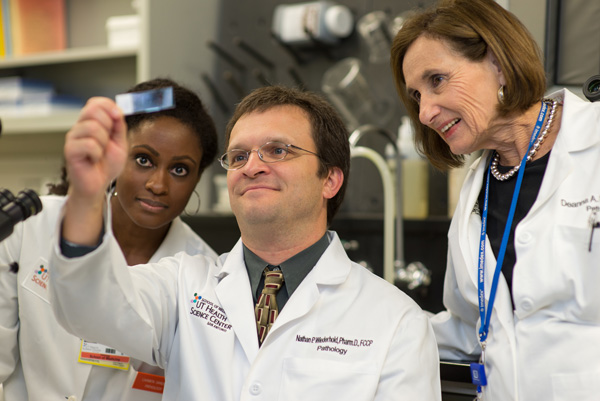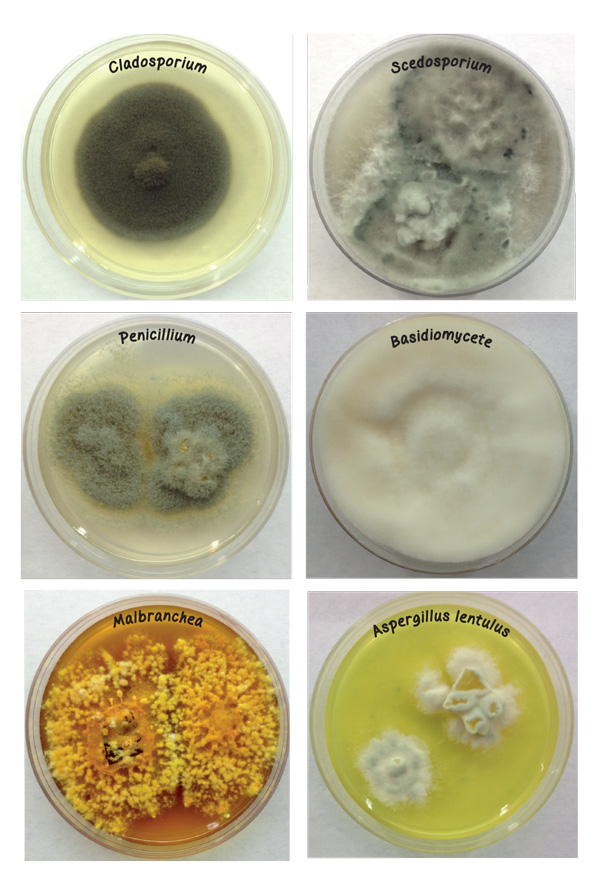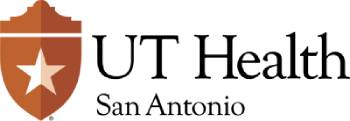They’re everywhere. They sometimes appear as mold. Sometimes, yeast. They’re a necessary ingredient in beer, cheese, bread and soy sauce. They’re also used to make industrial chemicals, detergents and antimicrobials.
Simply put, fungi are an essential part of life.
But what happens when things get out of hand? Enter the Fungus Testing Laboratory.
“Although fungi surround us and help maintain our environment of natural growth and decay, they can be harmful to those who are immunocompromised, such as patients with transplants, cancer or HIV,” said Nathan Wiederhold, Pharm.D., associate professor of pathology.

While fungal infections may appear on the skin, oftentimes they are acquired by breathing in the air (not by eating mushrooms). When patients with weak immune systems are unable to fight these infections on their own, their physicians turn to the Fungus Testing Laboratory to help identify and treat the infection.
First, a sample is cultured from a human or animal and isolated by institutions or hospital labs. Then the sample is sent to the Fungus Testing Laboratory, where it is analyzed under a microscope, or at the molecular level to study the sample’s DNA sequence.
Various antifungal compounds are also tested against the fungi in order to help guide in treating the infection. Drug level assays also determine if antifungal compounds are in therapeutic ranges to fight infections in patients.
Thirty years ago, the lab was founded as a one-man shop by Michael Rinaldi, Ph.D. It slowly grew, with the addition of Deanna Sutton, Ph.D., professor of pathology, and Annette Fothergill, M.A., M.B.A., associate clinical professor of pathology. With Dr. Rinaldi’s passion for spreading the word about fungal disease, Dr. Sutton’s talent for fungal identification and Fothergill’s savvy skills for drug susceptibility testing, cases quickly increased and the small research area mushroomed into a bustling lab with 10 employees who occupy more than 2,800 square feet.
The lab now receives more than 5,000 specimens annually for testing and combines both research and clinical care under one roof. Dr. Sutton serves as the administrative director, Fothergill is the technical director and Dr. Wiederhold assumed the directorship of the laboratory after Dr. Rinaldi’s retirement two years ago.
The lab has extended its services to include assisting with drug development and research on the effectiveness of drugs for pharmaceutical companies. Many of the most commonly used antifungals such as Posaconazole, often used to treat thrush, and Efinaconazole, used to treat toenail fungus, were tested early in pre-clinical development in the Fungus Testing Laboratory.
“What sets the Health Science Center’s Fungus Testing Laboratory apart is the high level of expertise and expanse of our testing capabilities,” said Dr. Sutton. “There isn’t another lab in the world that receives the amount or scope of cases and has the number of fungal isolates that we do.”
The laboratory has assisted in cases that have made national headlines. Among them, the deadly 2012 outbreak of fungal meningitis that affected more than 750 patients in 20 states who had received spinal injections with a contaminated steroid from a compounding lab in New England.

“The expertise and service provided by the lab are well-recognized,” said Sean Zhang, M.D., Ph.D., director of the Mycology Laboratory at Johns Hopkins Hospital. “The textbook, Guide to Clinically Important Fungi, edited by the scientists in the lab, is the must-have reference book for almost every clinical lab that offers fungal identification testing. In addition to the excellent clinical service, the lab collaborates with other academic centers in conducting cutting-edge research in the area of fungal diagnostics.”
Researchers in the lab have contributed to the discovery of several new species of fungi, including those causing infections. Among the most recent is Acremoniopsis suttonii, a yellow, slimy cylindrical fungus found in forest soil in Burgos, Spain. It was named in honor of Dr. Sutton’s years of work in fungal taxonomy.
The lab has also trained dozens of researchers in the United States and throughout the world who in turn have established labs in their respective institutions and countries. Collectively, the three directors have published more than 500 papers on fungal research and are frequent presenters at international conferences.
Although there is not a typical day in the lab, the future points to challenges with resistance to drugs, the necessity for early and rapid diagnosis, and changes in taxonomy.
“This is a dynamic time for mycology,” said Fothergill. “There is so much more to learn and discover.”
